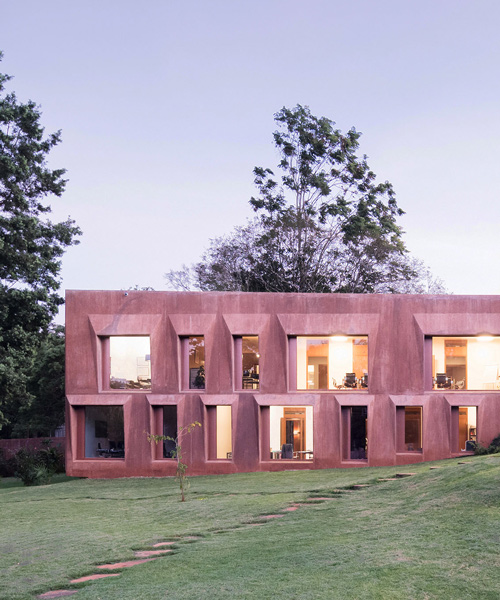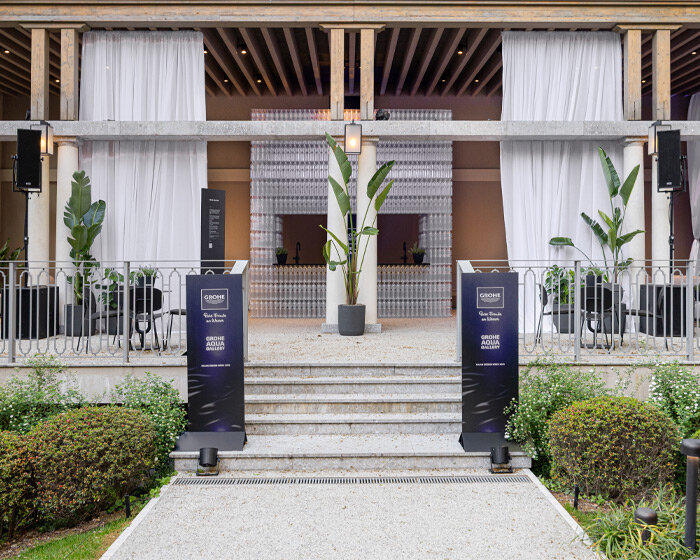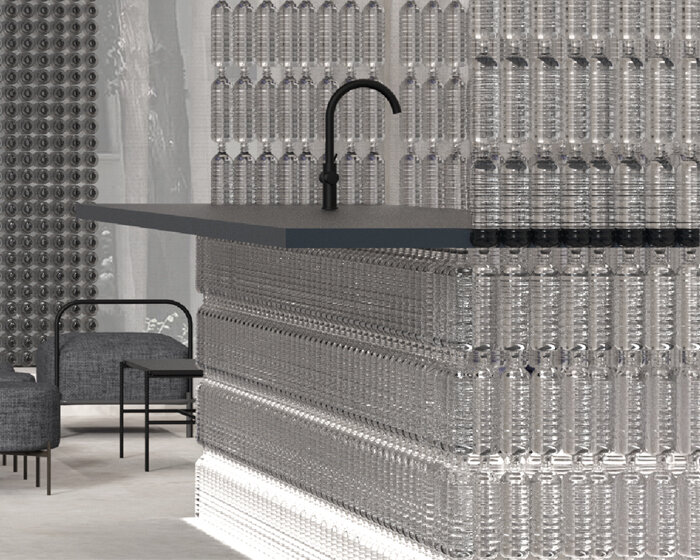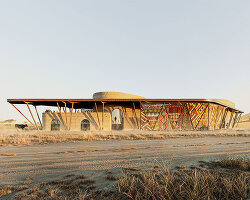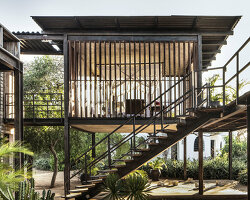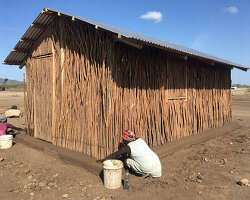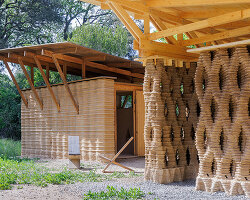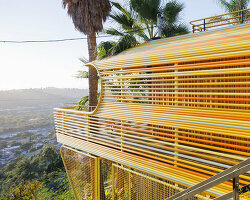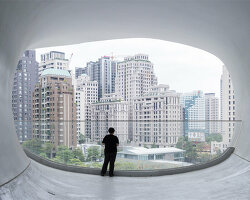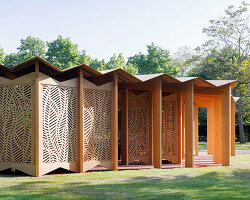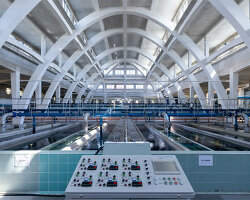lucerne-based firm roeoesli & maeder has completed switzerland’s new embassy in nairobi, kenya’s capital and largest city. the building is surrounded by trees which have an embedded social and political importance following political activist wangari maathai’s green belt movement in the country, which began in 1977. set in a lush and leafy neighborhood, the embassy’s footprint circumvents the site’s existing trees, while the building itself is topped with a green roof — further integrating it into its bucolic context.
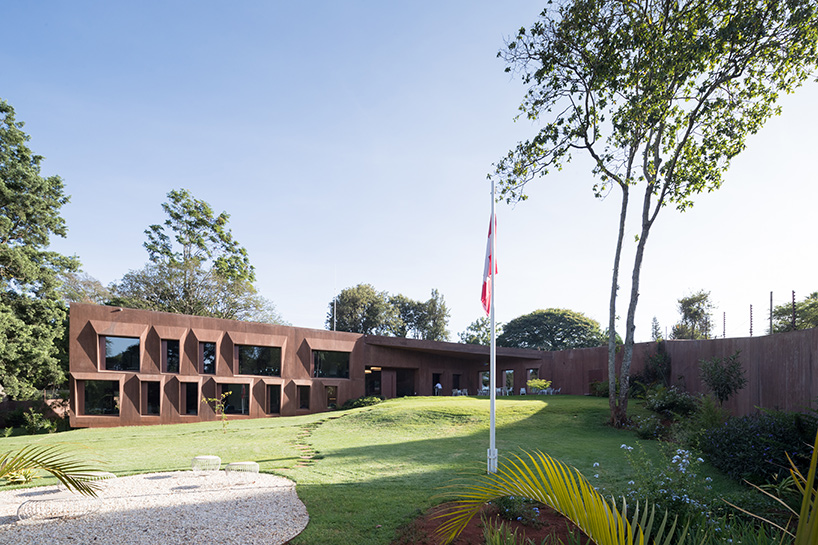
switzerland’s new embassy in nairobi, kenya
image © iwan baan (also main image)
a perimeter wall, a safety provision mandated by the brief, turned out to be the starting point of the embassy’s design — merging the enclosure of the site, with interior programing. ‘the building itself grows seamlessly out of this enclosing wall, which spirals into the middle of the site, culminating in a split-level arrangement of rooms at the center,’ explains roeoesli & maeder. ‘a slight gradient of the ground further enhances the split level arrangement, with each of the offset floors containing different functions.’
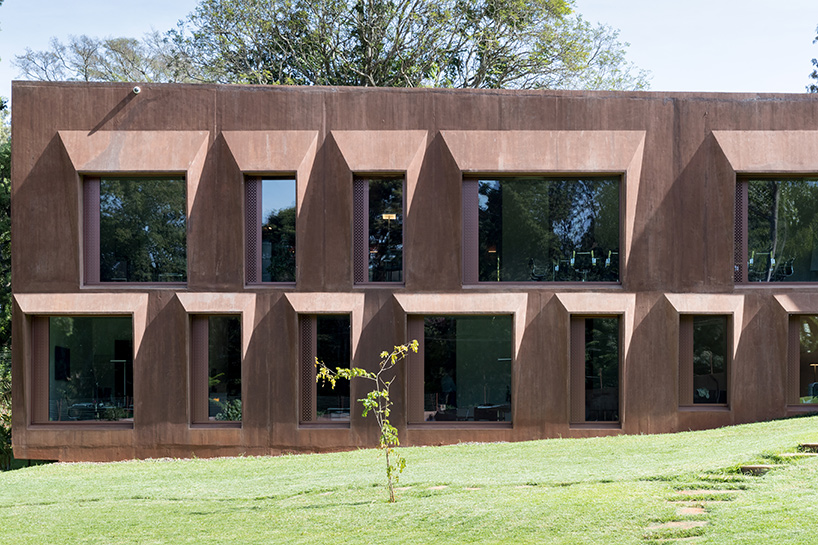
the building’s faceted, polygonal geometry is unified by red-tinted concrete walls
image © iwan baan
internally, the lobby, which serves as the building’s central hub, connects the different areas of the embassy. the space also provides a visual connection to the outside world, furthering the embassy’s relationship with its natural setting. the building’s faceted, polygonal geometry — a direct result of the desire to maintain prominent trees — is unified by concrete walls with a dyed red coloration, (a tone that resembles the iron oxide found in the local soil).
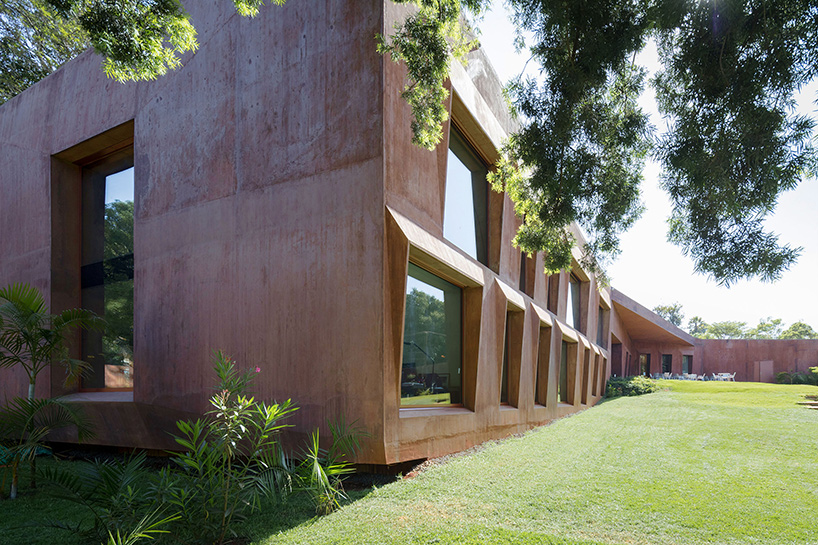
the thick concrete façade regulates the building’s internal temperature
image © iwan baan
importantly, the thick concrete façade regulates the building’s internal temperature, meaning that there is no need for air conditioning or heating. in addition, a flexible use of internal space, an array of solar panels, and rain and waste water recycling systems complement the sustainable use of the building. roeoesli & maeder won the competition to complete the building in 2011 before collaborating with local firm DMJ architects to realize the project.
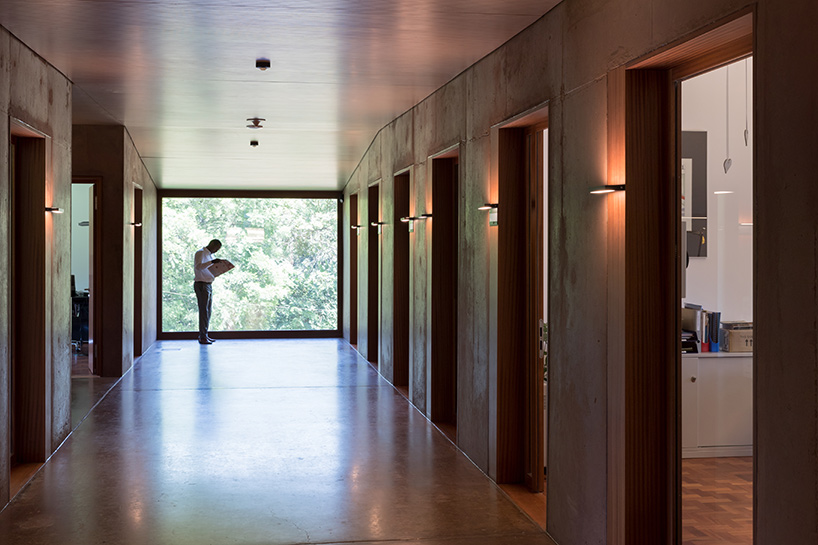
a visual connection is provided to the outside world
image © iwan baan

large windows frame external views
image © iwan baan
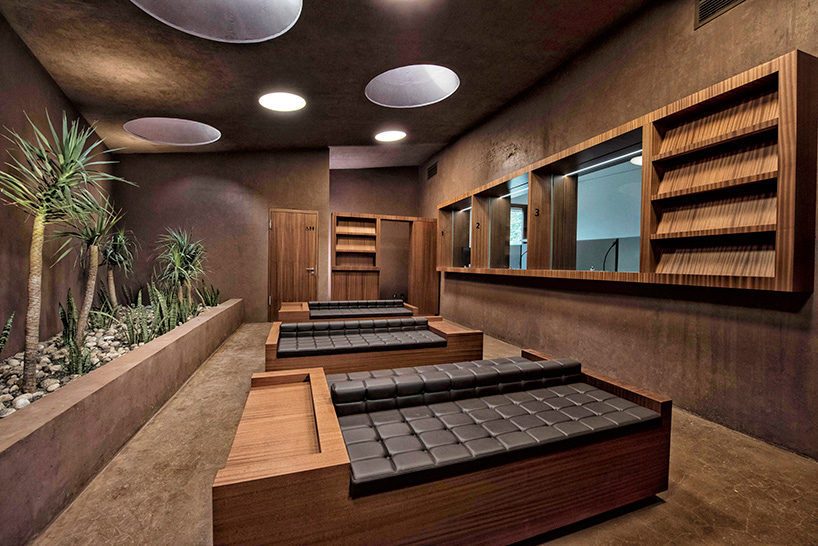
each of the offset floors contain different functions
image © fabio idini
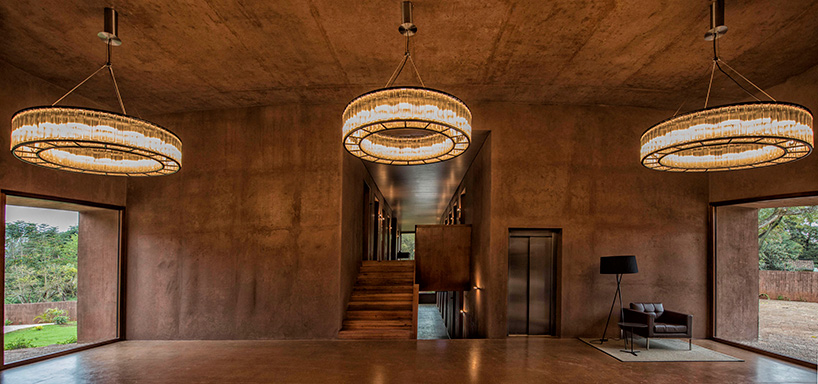
a slight gradient of the ground enhances the split level arrangement
image © fabio idini
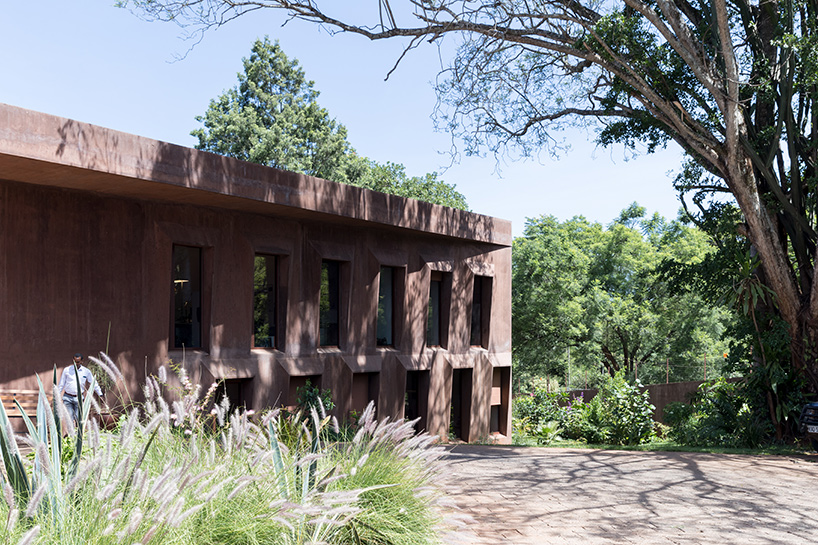
the building is surrounded by trees which have an embedded social and political importance
image © iwan baan
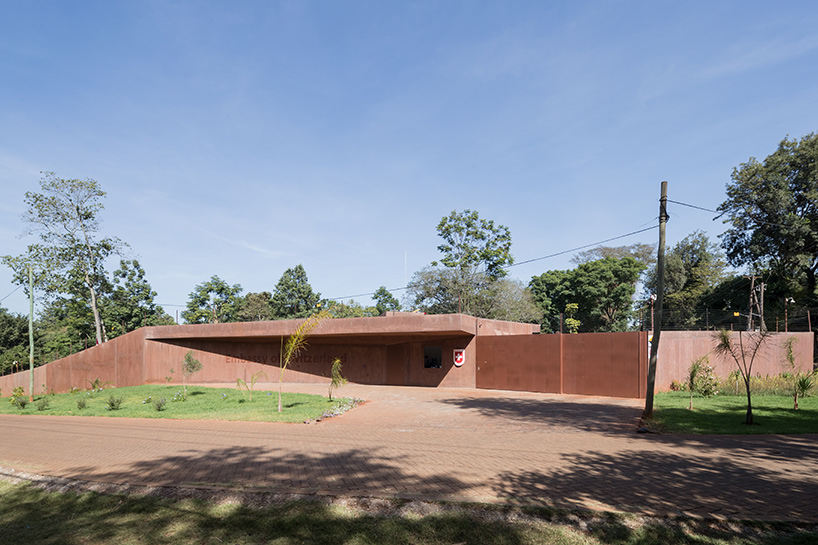
the perimeter wall turned out to be the starting point of the embassy’s design
image © iwan baan
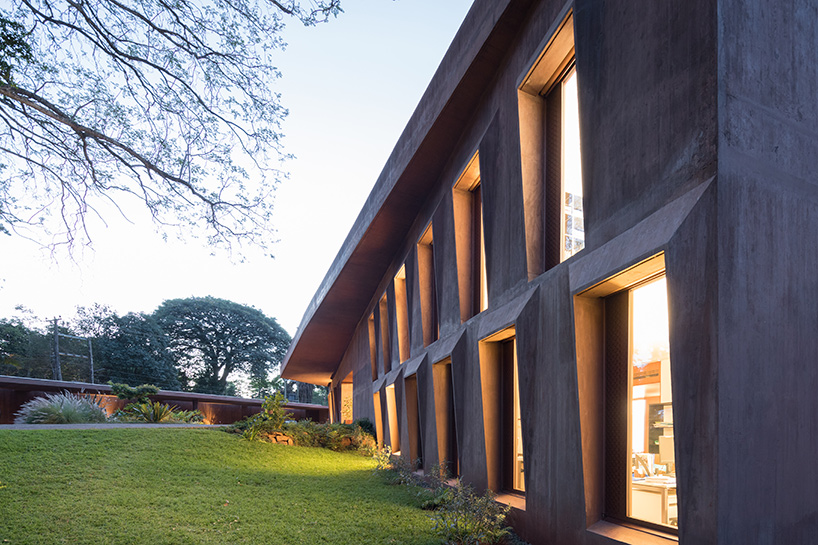
the structure is topped with a green roof
image © iwan baan

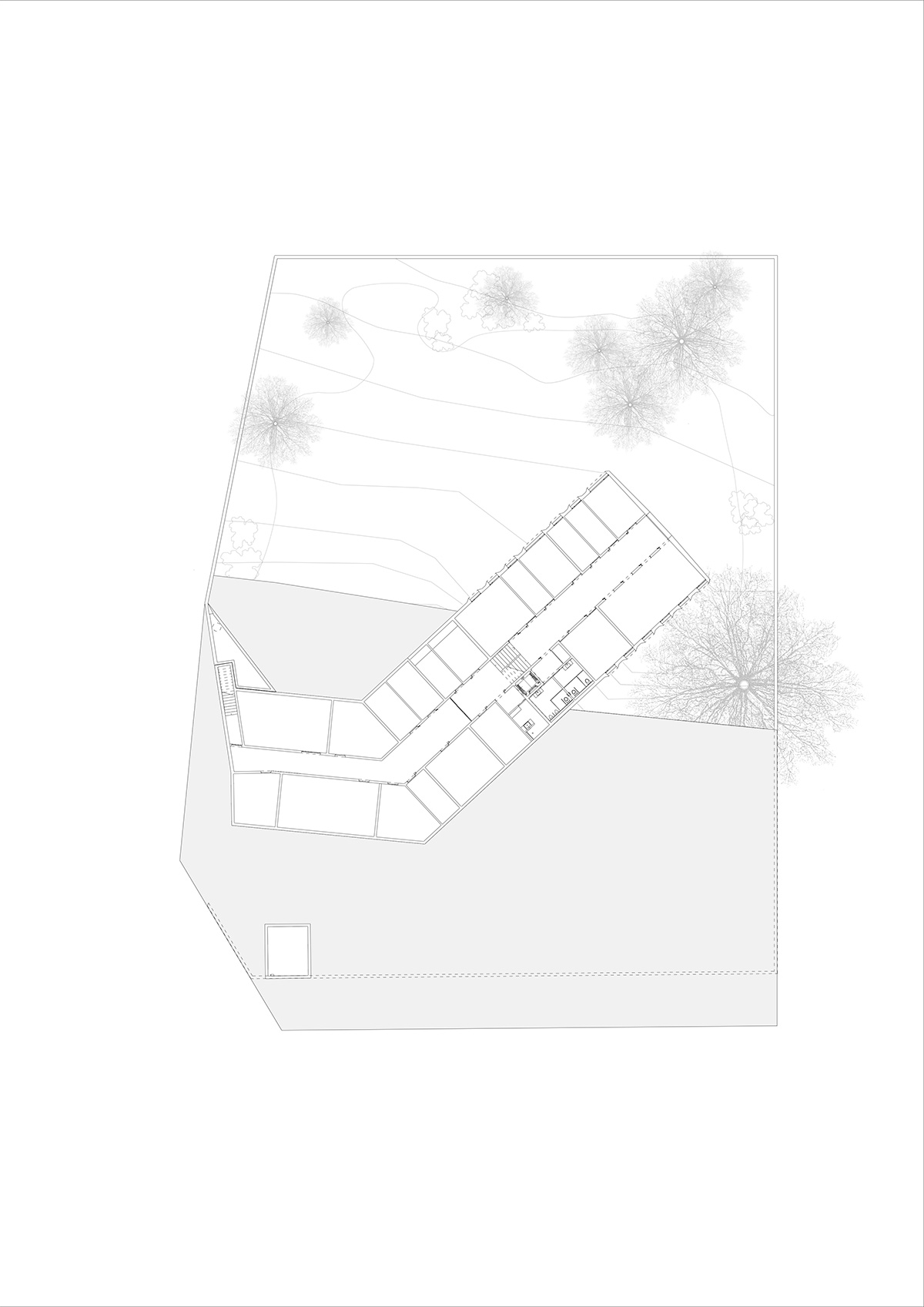
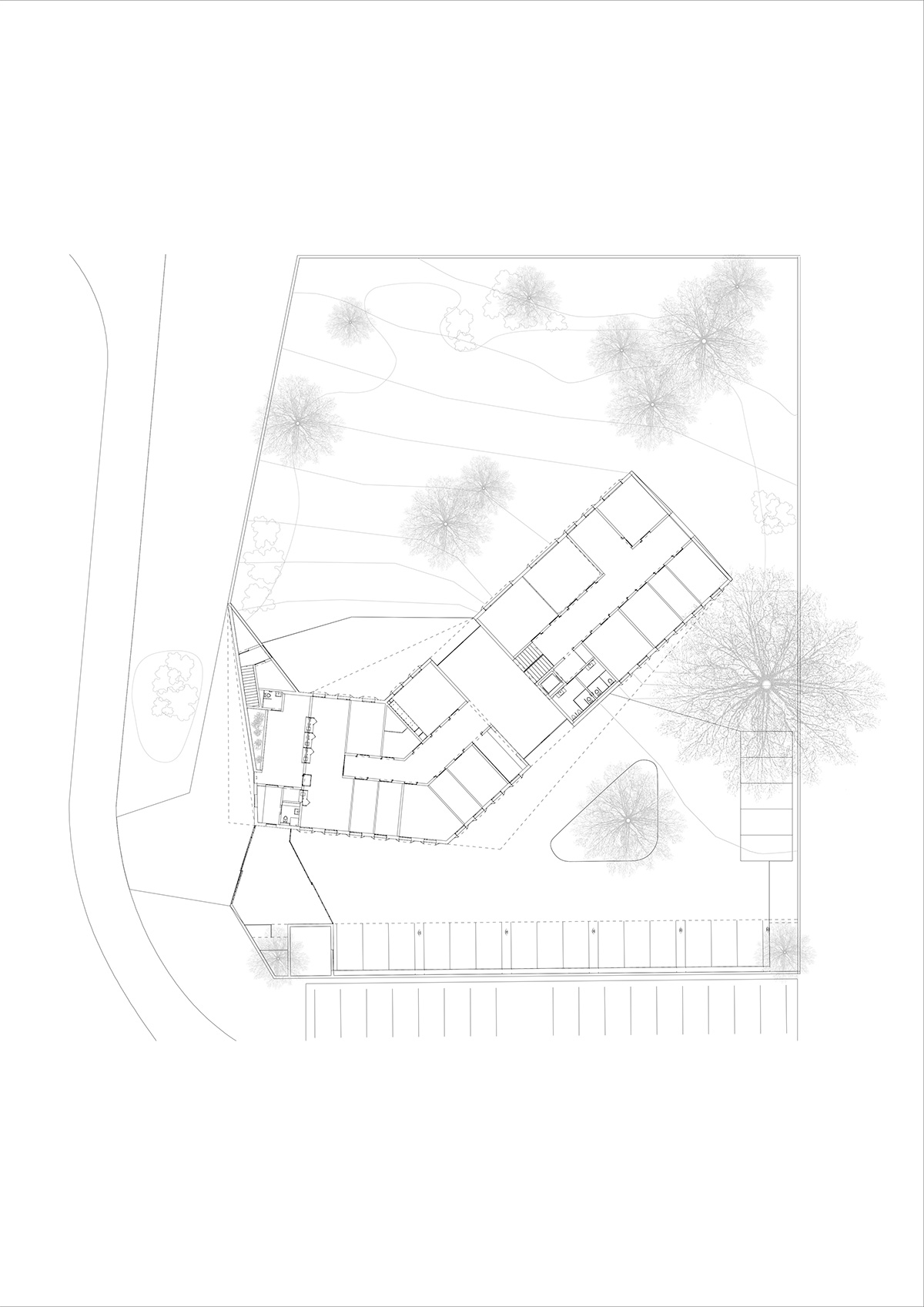
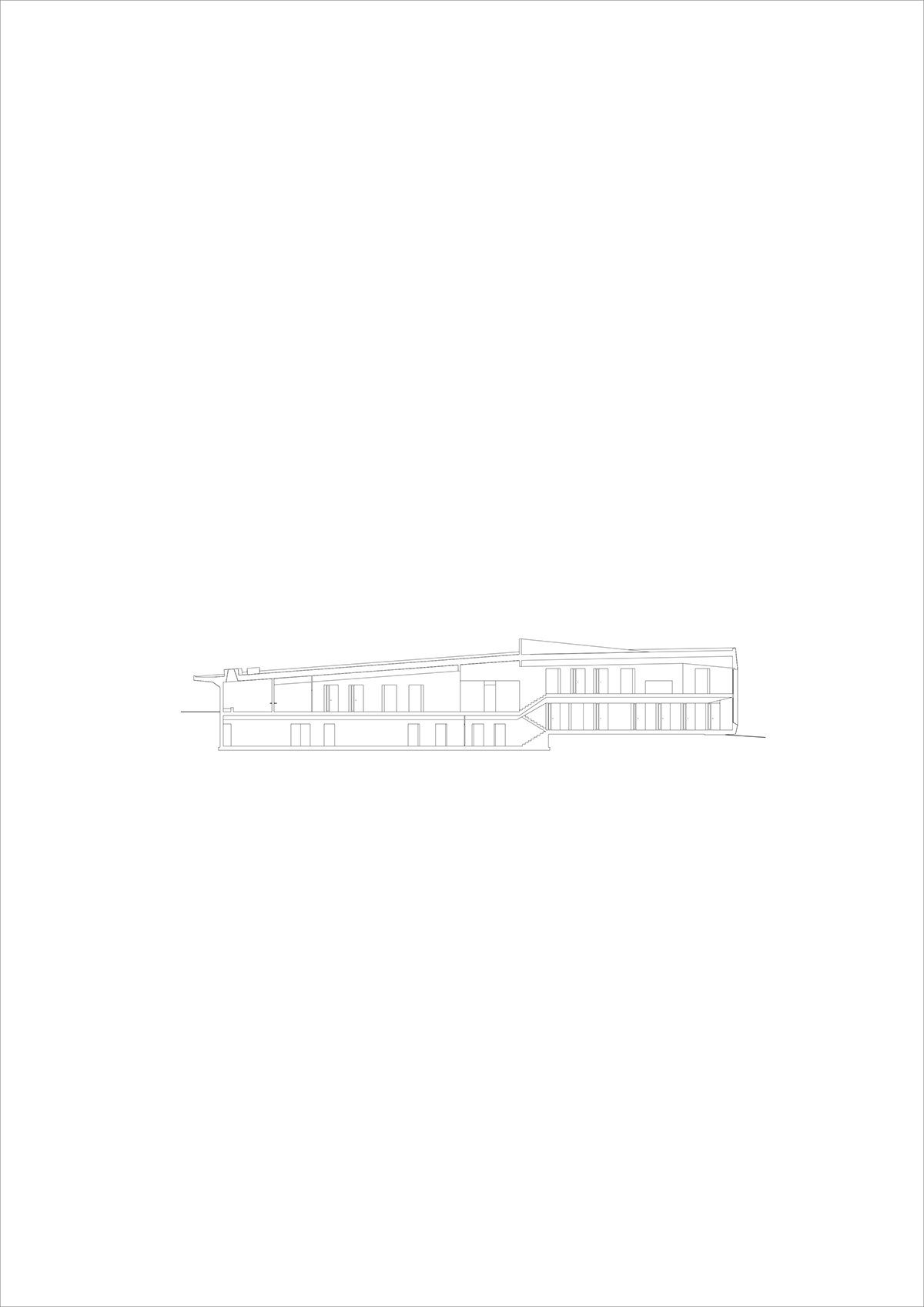

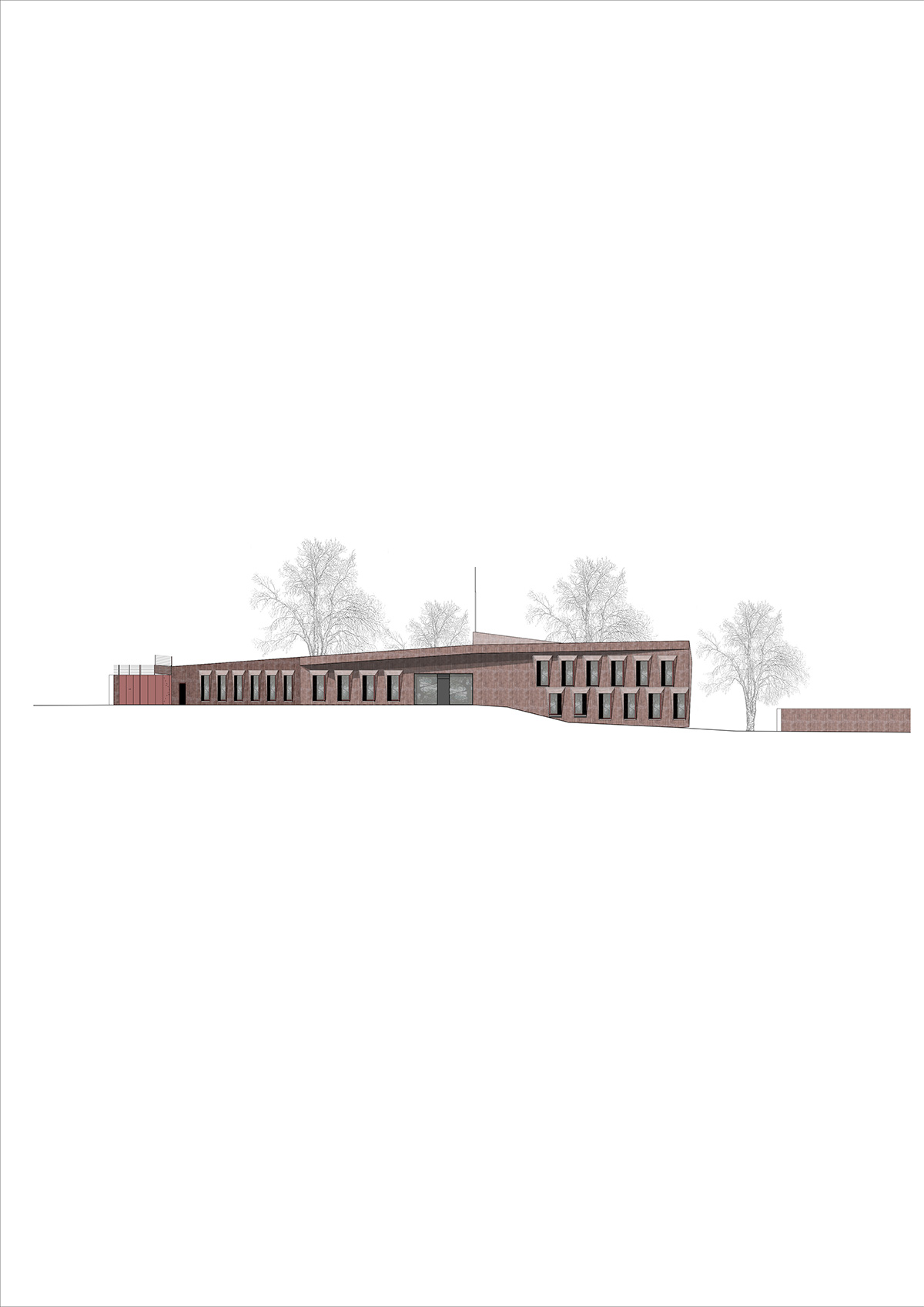

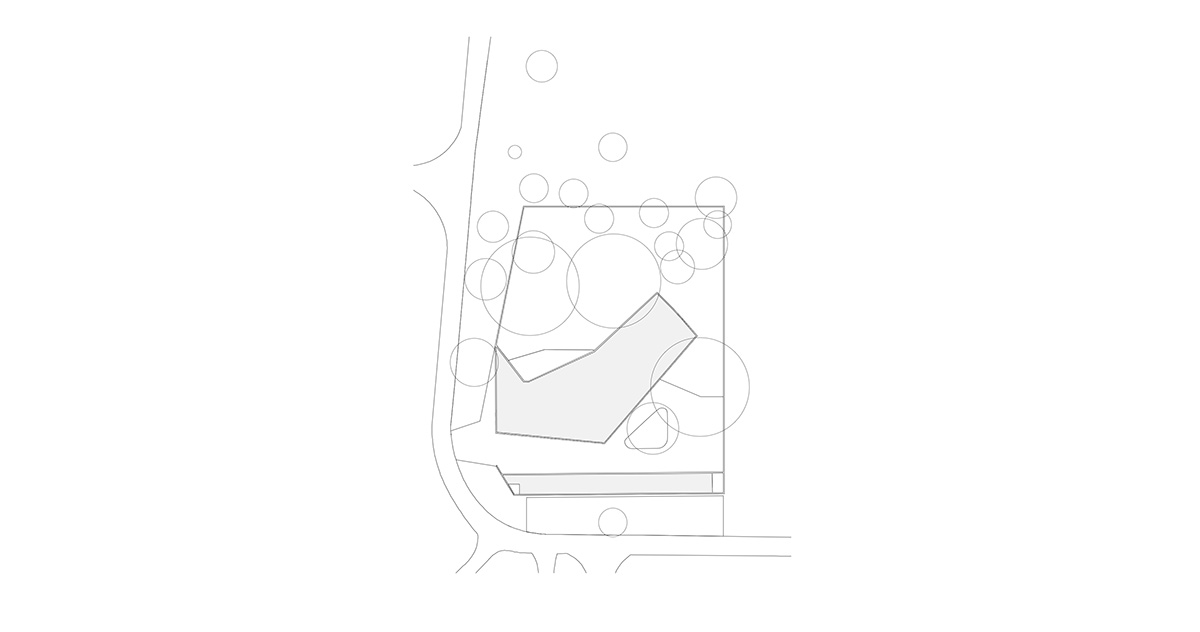
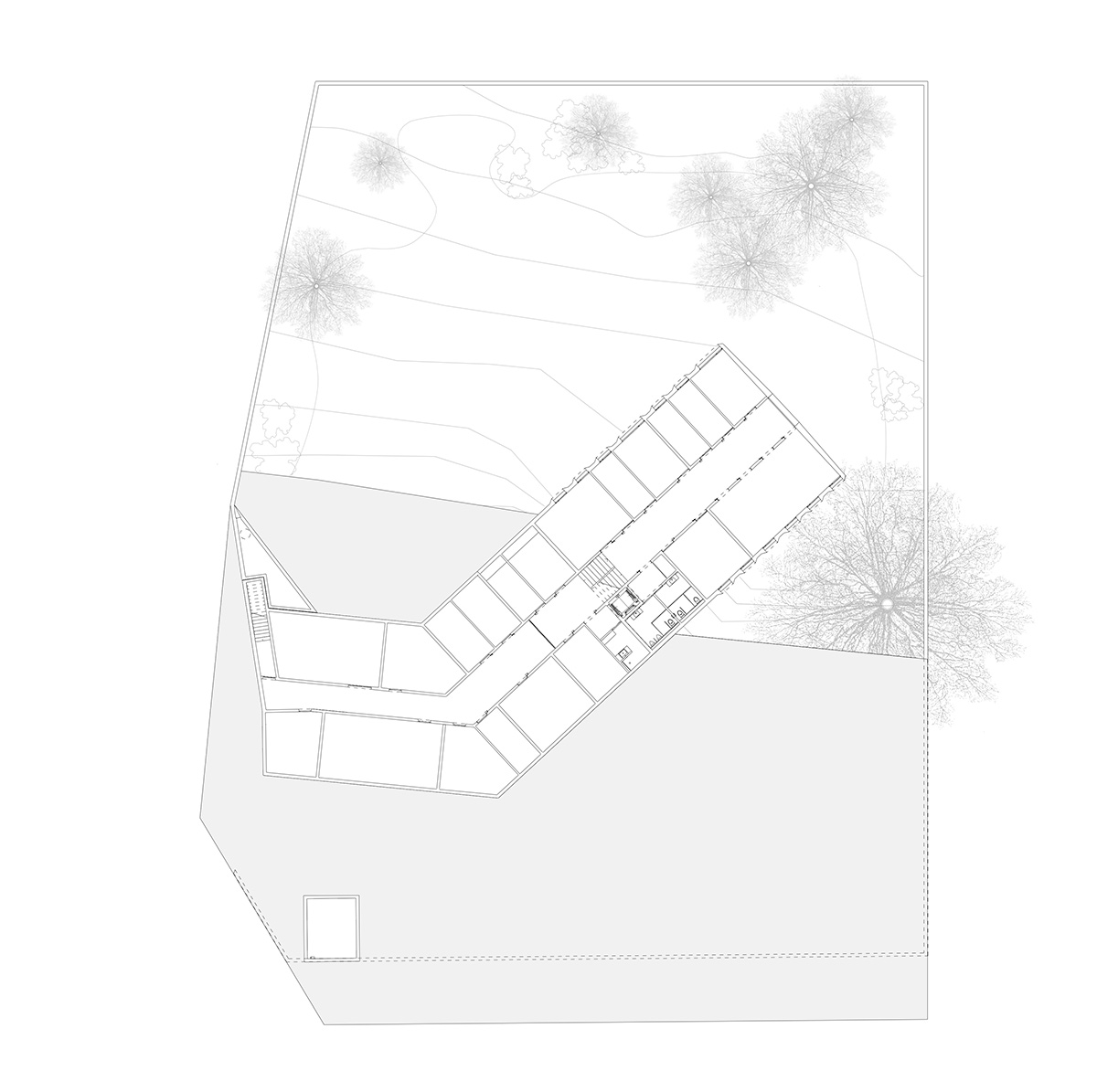
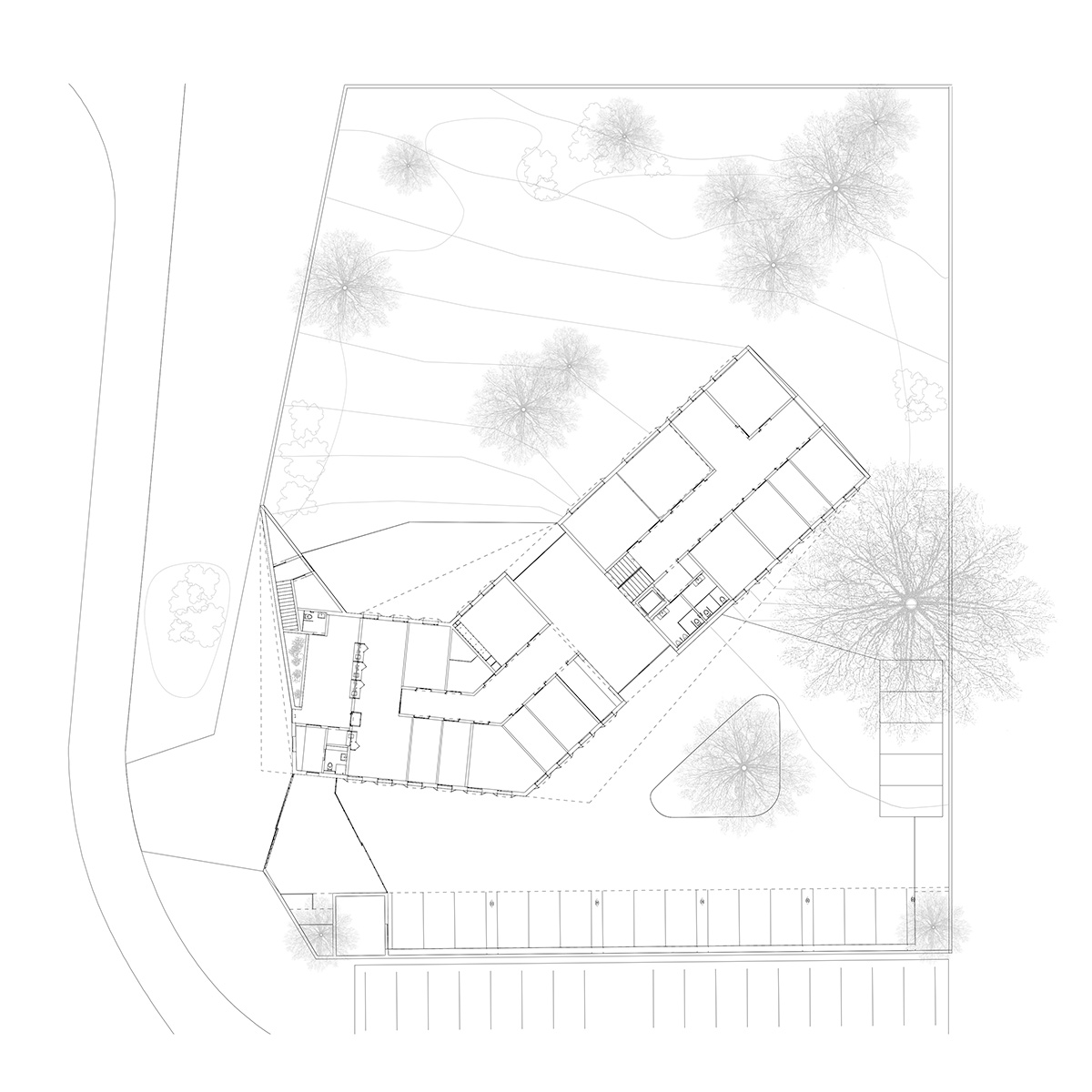

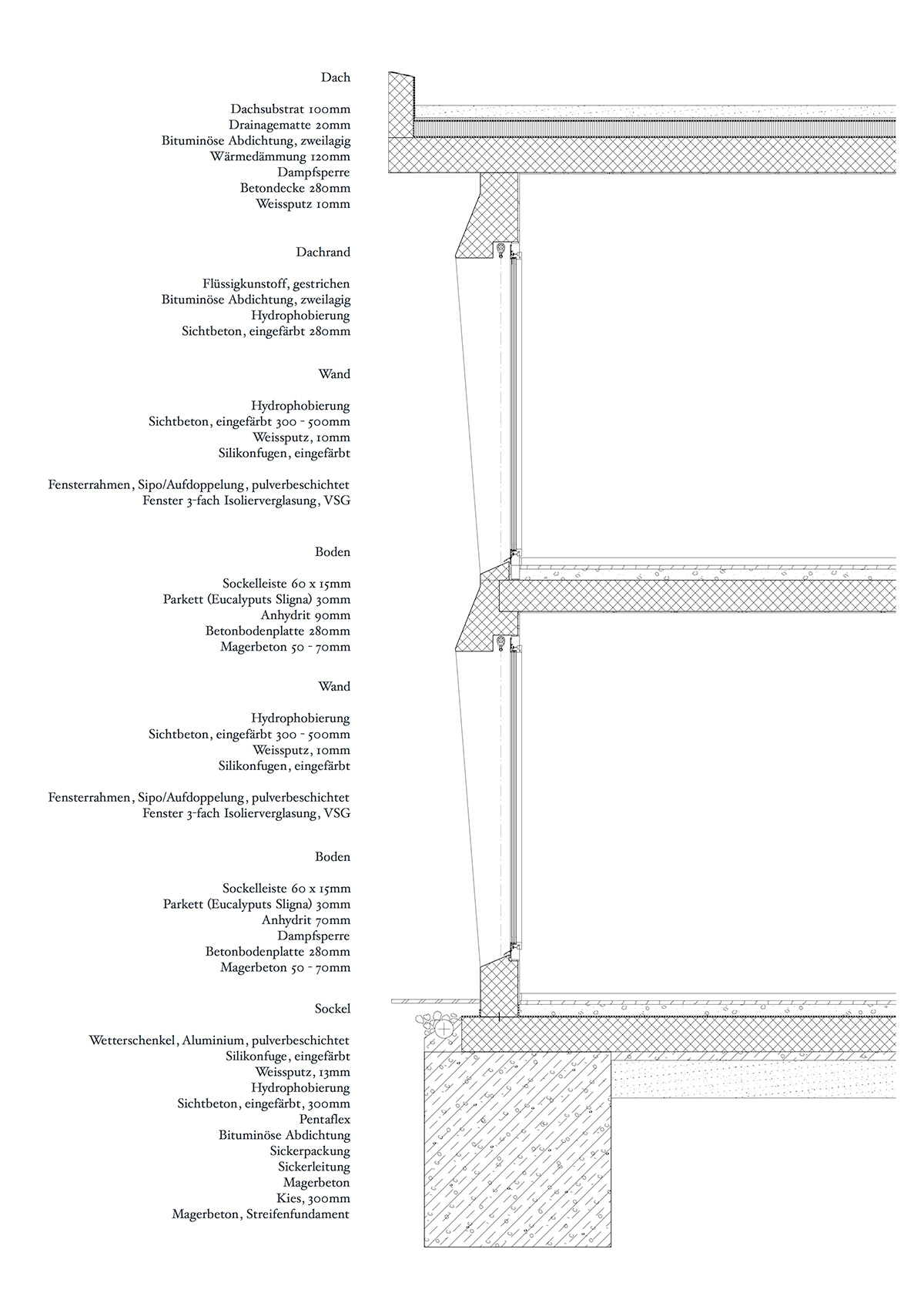
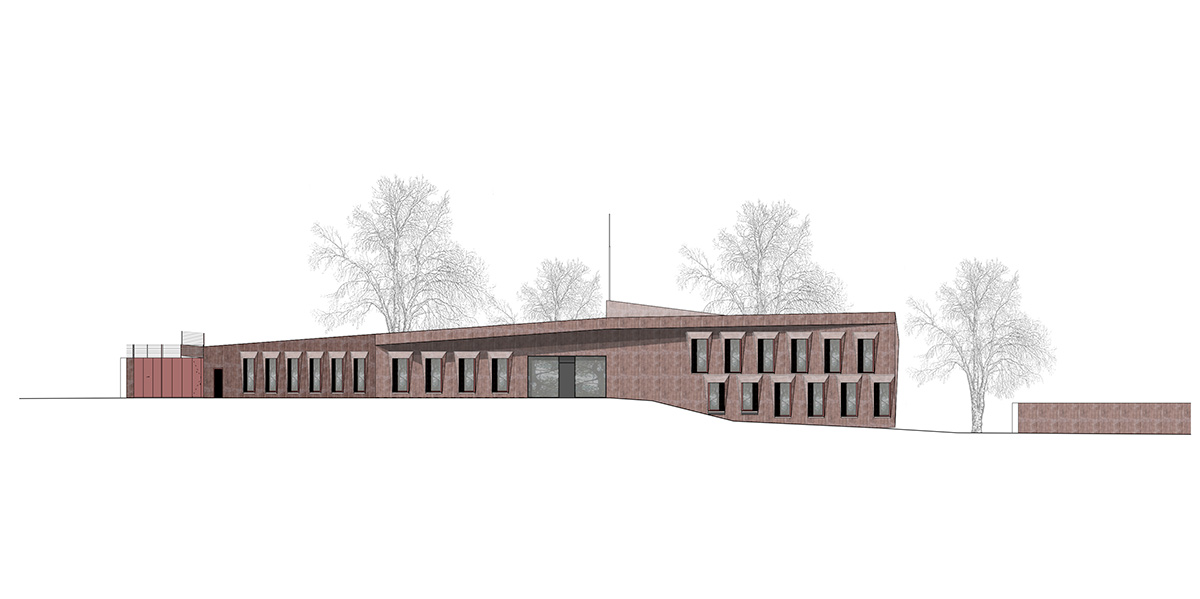
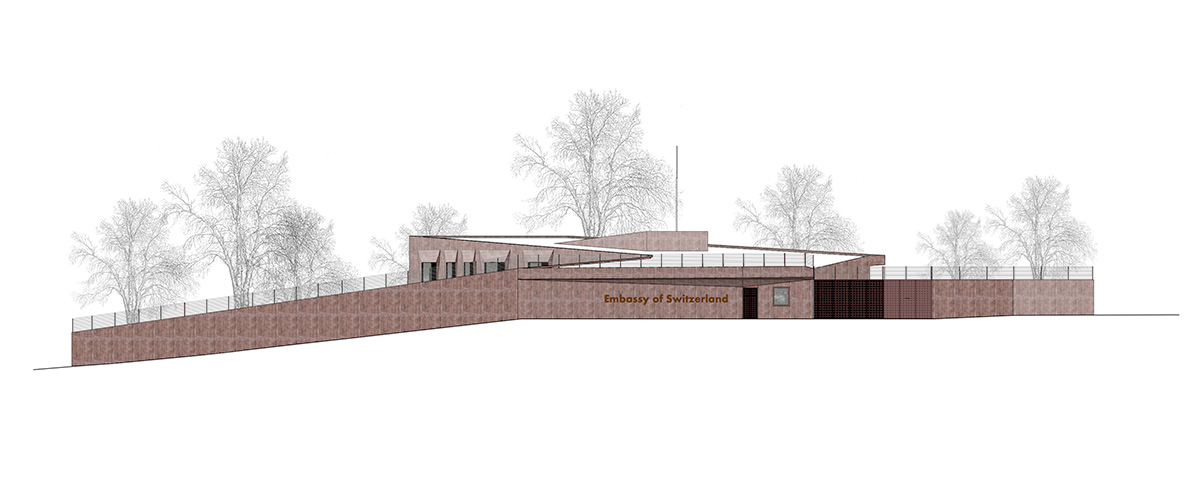
project info:
competition (open procedure): 2011
realization: october 2014 – august 2016
location: embassy of switzerland, nairobi, kenya
plot area: 4,046 sqm
footprint: 770 sqm
usable area: 1,512 sqm
main usable area: 849 sqm
volume as per SIA 116: 6,120 m3
photography: iwan baan and fabio idini
client: swiss conferderation, federal office for building and logistics FOBL
project manager: jodok brunner
client’s representative in nairobi: bautop 2001
collaboration: rené häni
architect: ro.ma. roeoesli & maeder gmbh, dipl. architekten eth bsa
collaboration: christian maeder, philipp röösli, adrian rogger
local architect: DMJ architects
collaboration: simon johnson
project management: mentor management ltd.
collaboration: andrew ward, lawrence mureithi
landscape architect: concrete jungle
collaboration: bruce hobson
civil engineer: BG ingenieure und berater AG (zürich)
collaboration: markus pieper
civil engineer: metrix integrated consultancy
collaboration: khalid alkizim
MEP engineer: BG ingenieure und berater AG
collaboration: maxime raemy, benoît müller
MEP engineer: EAMS ltd. consulting engineers
collaboration: gordon schofield
